Groceries to Buy on a Budget | Eat Well for Less

You CAN eat well for Less! Specific, actionable tips and suggested groceries to buy on a budget that are still healthy.
I don’t know anyone who isn’t tightening their belt right now, adjusting their budgets to deal with inflation. If you are anything like me, you’ve always been trying to find more economical ways to run your home. This breakdown of groceries to buy on a budget will hopefully help you meet that tighter budget.
Healthy foods are a necessity in life, of course. However, your food expenses are one of the most flexible parts of a family budget. That’s the good news!
So, if you’ve recently taken a pay cut, want to build an emergency fund, or want to discover new ways to reduce financial stress, learning what groceries to buy on a budget is your solution.
Plus, there are many other methods to shrink your grocery bill beyond knowing what economical meals to make and products to buy, like shopping at bulk food stores and coupon cutting. In this post, I’ll guide you through the smartest grocery shopping choices when working with a limited budget.
Your Shopping List Should Include these Groceries to Buy on a
Budget
Some of these are affiliate links, and I will earn a small commission off of the sale of these products, but the price you are charged is not affected. You can see my full disclosure policy here.
In the following sections, you’ll discover some of the most economical and versatile products to add to your shopping list.
On-Budget Pantry Staples Pasta, Rice, and Other Grains
Pasta, white rice, brown rice, and grains make for the base or sides of countless delicious meals. Even better, they keep in the pantry for a long time, so buy them in bulk when they’re on sale! Pasta, grains, and rice are super filling, can extend a meal, and can feed a family of any size for cheap.
White rice tends to be the most economical of the grains, with brown rice and quinoa battling for position number two. Couscous and Oats are right behind.
Simply add a sauce, homemade gravy, or basic seasonings, and you’re on your way to a tasty and substantial meal for less.
Canned, Frozen, and Fresh Vegetables and Fruits
Not all canned and frozen fruits and vegetables are created equal, but they all have been wrapped up in the misunderstanding that they are ‘less’ healthy than fresh. In a nutshell, that’s not always true.
Unless you pick fresh produce from your garden and eat it that day, fresh, canned, and frozen produce is nutritionally equivalent. As fresh produce ages, it loses some of its nutrients. Assuming vegetables are processed at their peak, frozen and canned may be more nutritious than the fresh produce that has been shipped for thousands of miles, sat in the grocery store, and then in your refrigerator.
- On average, canned vegetables are 20 – 50% cheaper than fresh. USDA’s survey foun d that ” Fresh and frozen vegetables are typically more expensive per pound than other forms, it is not surprising that the least expensive way of purchasing vegetables is in canned form. For 13 out of 20 vegetables, a canned form was the cheapest way to buy a pound of the vegetable.”
- Ounce for ounce, frozen spinach packs more nutrition for a lower price than fresh. While frozen may not be great for a salad, frozen is the more economical way to go if you are cooking or processing it. Canned is even cheaper.
- If your recipe calls for diced tomatoes that will be cooked, it is usually more economical to buy the canned versus the fresh. And canned tomatoes have been heated in the processing. The heat of canning also increases the amount of lycopene that the body can absorb, which is good for eye health. So not only are they more economical, they are better for you.
Canned green beans might not have the crispiness of fresh green beans, but ounce for ounce, they are not nutritionally far off as long as they are not salted. And canned green beans are almost half the price of fresh.
Unless you pick them right from your garden, shelling and eating them, buying frozen peas will always be cheaper and more nutritious. Their sugars turn to starch immediately upon picking, which is why fresh peas can get mealy.
Broccoli is one of the veggies I always opt to buy fresh; freezing it makes it turn watery and mushy.
I typically buy bags of frozen berries in the off-season since they are out of season and spoil so quickly. And not for nothing; a 10-ounce bag of frozen raspberries is about the same price as a 6-ounce clamshell of the berries.
- As it relates to fruit, a Michigan State Study from 2012 found that there was very little difference in the nutritional content of fresh, frozen, or canned fruit. The study also found, “Of the 10 fruit items reviewed in this study, canned packaging provided the lowest cost for four items; frozen packaging provided the lowest cost for two, and fresh for the remaining four.”
What are the Least and Most Expensive Fruits?
- In terms of price per pound, the most economical fresh fruit are: (per the USDA). This list is in order of the most economical first and are often less than $1 per pound.
- Bananas
- Watermelon
- Cantaloupe
- Grapefruit
- Pineapple
- Papaya
- Valencia Oranges
- Honeydew Melons
- The more expensive fruits, per pound, are :
- Apples
- Peaches
- Plums
- Apricots
- Avocado
- Strawberries
- Raspberries
- Blueberries
What are the Least and Most Expensive Vegetables?
- The most economical vegetables, by the pound (again, this list is in order of the most economical first and are often less than $1 per pound.:
- Cucumbers
- Carrots
- Cabbage – Cabbage is some of the least expensive produce items you can buy. Not everyone is a fan- especially kids! But, they’ll hardly notice the cabbage when finely chopped and cooked. It makes for an excellent filler for stir fry or pot roast.
- Squash
- Onions – Onions are a perfect staple to store away for when making meals from scratch. They add flavor to bland meats and stand well on their own.
- White Potatoes – Potatoes rank highly on your list when looking for groceries to buy on a budget. Like pasta and rice, potatoes, and sweet potatoes are incredibly versatile and filling. You can stuff them, dress them, fry them, stew them, boil them, and much more!
- Russet Potatoes
- Shown in increasing price per pound, the more expensive vegetables are:
- Sweet Potatoes – One of our favorite, inexpensive but very healthy meals is a baked sweet potato topped with seasoned pinto beans and cheese.
- Celery
- Beets
- Bell Pepper
- Broccoli
- Cauliflower
- Roma Tomatoes
- Eggplant
- Spinach
- Mushrooms
- When you buy fresh produce, take the necessary steps to keep produce fresher, and longer.
- And consider planting a garden! If nothing else, start some patio tomatoes. Not only will you save money not having to purchase tomatoes, but you know they taste better. This post shares some great tomato varieties that do well in containers and on patios.
One admonition, avoid vegetables canned with salt, fruit canned with sugar, added sauces, and BPA-lined cans. FWIW, Costco doesn’t sell BPA-lined cans.
Beans
With an average price of $1.50 per pound in the United States, the nutritional powerhouse dried beans are one of the best cheap foods out there and should be the staple of any pantry. Lentils and split green peas are the most economical of the dried beans, but I’m partial to the meaty cannellini bean which I buy in 10-pound bags!
Not to be outdone, canned beans can be the basis of just about any dinner. A can of black beans can be spiced up for a taco salad or a burrito. Saute some kale and sausage with a can of white beans. Make hummus from a can of chickpeas or garbanzo beans. Again avoid salt and BPA-lined cans.
Sauces and Spices
When working with a tight grocery fund, it’s wise to stock up on sauces and spices. Frequently, you’ll be making meals from scratch unless you find a deal on premade meals. So, fill your spice cabinet with all the goods, like salt, pepper, tomato sauce, garlic powder, onion powder, or whatever else tickles your taste buds!
Tip: Want to add some flair to those canned veggies? Adding some dried herbs and spices is a great addition and will bring all new life to the plain canned veggies.
Other Smart Pantry Products
- Mac’ n Cheese
- Flour, Sugar, and Yeast
- Baking Powder and Baking Soda
- Peanut Butter
- Canned Fish or Chicken
Proteins for a Limited Budget
Eggs
Most people think of breakfast when they think of eggs. However, they can go much further than just the day’s first meal. Add eggs to rice or noodles for an Asian twist on your favorite dishes. Top fresh and crunchy salads with boiled eggs. Make a simple and easy egg salad- turn it into a meal with some homemade bread or eat it as a snack or side dish.
Eggs are also needed for many different recipes when cooking or baking from scratch.
Ground Beef and Turkey
Ground beef and turkey can be much more economical when compared to other meats. And they work well for numerous family favorites, like:
- Spaghetti (Beef or turkey)
- Tacos and burritos
- Stir fry
- Meatloaf
- Handmade burgers
- Various Chilis
In addition to using some of your tips, here are additional strategies I used especially when I had teenage boys. I bought whole pork and beef loins, cut them up, and froze the sections. When comparing prices for bone vs. boneless chicken, bones make up about half the weight (not including the monstrous Frankenstein chickens). Any bones were immediately made into stock in the crockpot with frozen bits of vegetables I had collected, and then the stock was frozen in meal-appropriate portions. Once a week, I’d empty the refrigerator of leftover bits and put it all into a soup (hello ready-made stock!) or on a pizza. Teenage boys will eat anything on a pizza.
Patti
One of our fantastic readers shared this tip
Chicken Legs and Chicken Thighs
When it comes to chicken, you’ll want to opt for the dark meat to cut the food budget. Sure, it’s not as healthy, but in moderation, you’ll be just fine. If you’re looking for groceries to buy on a budget, chicken legs and thighs are one of the most thoughtful choices you can make for protein.
Tip: Most of the time, the whole chicken is the best deal. Just compare the unit price of the dark meat and whole chicken.
Other Great Sources of Budget-Friendly Protein:
- Pork
- Hot dogs
- Dairy (cottage cheese, ricotta, non-fat plain yogurt)
More Snacks and Smart Choices
Popcorn
Pass on the microwave popcorn when shopping on a tight budget. Instead, purchase popcorn kernels and make irresistible freshly popped popcorn. It’s sure to be your new favorite healthy snack, especially with the wide variety of concoctions you can create.
Parmesan popcorn is a popular pick. Mix in a packet of ranch seasoning to add some zest! You can even kick up the spice with Cajun seasonings. Or satisfy your sweet tooth by adding tiny marshmallows and drizzling chocolate for s’mores-style popcorn.
Tea Bags
Remove expensive coffees and sodas from your weekly list to maximize your search for groceries to buy on a budget. Opt for tea instead. A box of tea bags is significantly cheaper than a pack of sodas or a can of craft coffee and it is an easy way to decrease your grocery spending and more.
And if you really want to take it a step further, buy your tea in bulk! This suggestion came from one of our readers, Jeanie. As Jeanie points out, not only is it more economical, but it results in less waste (👍🏻) and is typically fresher than the tea in the tea bags!
There are many flavored teas that give plain water added oomph. My favorite is the Celestial Seasonings Country Peach Passion. I make it by the pitcher and keep it in the fridge.
Tap Water
If you no longer have the flexibility to buy your favorite bottled water, it’s time to switch to tap. However, you can ensure your water is clean and tasty by investing in a purifying pitcher or attachment for the sink faucet. Do some research and shop around to find a product that is inexpensive yet efficient.
We had a chemical leak in our local water supply several years ago and so installed this APEC Reverse Osmosis Kitchen Sink System. It also ties to the water and ice maker in our fridge/freezer. At approximately $230, we know we have clean water, we know that we would have spent that much on bottled water in a year and we know we aren’t filling the landfills with plastic. Our filters need to be changed every year, which runs about $50 each time.
Other options are a Filter Pitcher or a Faucet Mount Filter. The price on these is comparable to one case of bottled water, so there are definitely money-saving opportunities here!
Additional Tips for Buying Groceries on a Budget, Eating Well, and Saving Money
For some extra assistance with your budget shopping journey, use the following different ways to stretch your dollar as far as it can go:
Grow Some of Your Food!
Especially in the summer months, there is no reason to spend money on herbs, tomatoes, beans, cucumbers, squash, and peppers. Even if you don’t have space for a full garden, these are all plants and vegetables that can be grown in pots. This post shares tomatoes that grow well in containers and on patios.
Reduce Your Food Waste
Whatever you do, don’t throw your limited food budget down the drain or in the trash! I’ve compiled more than forty Tips to Reduce Food Waste
Choose the Right Stores When Buying Groceries on a Budget
What makes shopping for groceries with a limited budget challenging for many families is having to trek into the unfamiliar. One of the greatest difficulties may be switching the local store and store brands you love to grocery shop. But there’s no need to worry when searching for great deals.
There are multiple options to try out:
- Walmart
- Aldi
- Costco
- BJ’s
- Sam’s Club
- HEB
- Save-a-Lot
- Food for Less
Couponing
In the first place, if you’ve been tossing out the countless coupon books you receive in the mail, it’s time to start saving them! Perhaps you’ve never even looked through these helpful booklets full of good deals. In that case, you’ll be shocked by the money you can save when you use coupons. So, grab your best scissors, turn on some upbeat music or your favorite T.V. show and get to work!
Buy in Bulk
Buying in bulk is a great way to save money when you are buying groceries on a tight budget. When you spot a BOGO sale or discounted price, never hesitate to stock up for the best value. Also, shopping at bulk food stores, like Costco or Sam’s Club, may be worth your time. Specifically, if you have a large and hungry family to feed, these stores can be a lifesaver! And we have not even touched on the fantastic generic brands at those big box stores.
Meal Prepping and Planning
Working with a tight grocery budget will leave you having to make most of your dishes from scratch. So, it’s vital you begin to prioritize meal planning, so nothing goes to waste. Then, you can make a sensible shopping list.
Peruse the weekly grocery sales before your make your weekly meal plan, building your plan about what good bargains are available, especially when you can buy them in bulk.
If you need some inspiration, here are more than 20 recipes that use economical ingredients but are still healthy.
Set aside a couple of ‘Eat What We Have’ months each year.
When I do this, I allow myself a fraction of my grocery budget for perishables like dairy, fresh produce, and vegetables. Other than that, I challenge myself to make our meals solely from what is already in the refrigerator, freezer, and pantry. You’ll be surprised! A great resource is the SuperCook app (it doesn’t work well on a computer, but try it on your phone)! Just tell it what you have and it will generate recipes.
Economical AND Healthy
Just because you need to make your food budget go further doesn’t mean you need to sacrifice buying food that is still healthy. Read labels, shop the periphery of the store and use resources, like this Good Food on a Tight Budget site from the Environmental Working Group
Wow…that was a whole lot of info I’ve thrown at you! This is the type of post that you may need to bookmark or pin to come back to read more than once. But I hope you are able to glean a few tips and suggestions for groceries to buy on a budget.
Thanks so much for spending a few minutes of your busy day with me!
If you want to ensure you don’t miss future content, pop your email in the pale green box on the right or click here. I usually send out one email weekly so that I won’t inundate your inbox. I’m sensitive to an overflowing email inbox!
We will only use your email address to send you emails, no more than 1-2 weekly. In addition, you will have access to my growing library of knit & crochet patterns, as well as other printables. Check back often as this library will continue to grow. Please know that you can unsubscribe anytime by emailing me or clicking on the “unsubscribe” link at the bottom of all emails.
And you can access many of the products I refer to on my Nourish and Nestle Amazon Page. You can access it here.
So, if you’d like to get in on the ‘subscriber benefit’ action, simply subscribe to Nourish and Nestle here or use the form on the right sidebar. It’s towards the top a bit.
I have sent all my subscribers the link to the Subscriber Benefits Library. If you missed it or misplaced it, drop me a line.
Until next time…

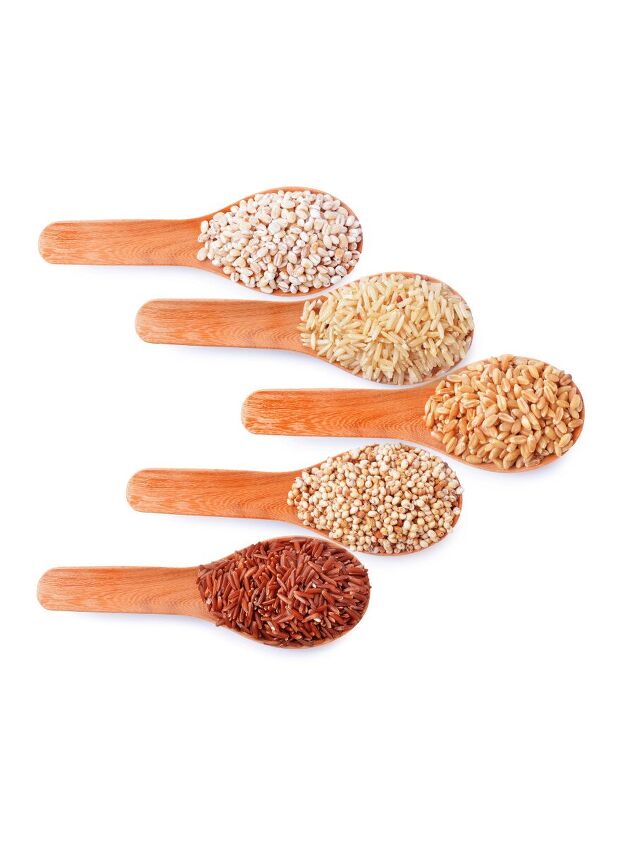












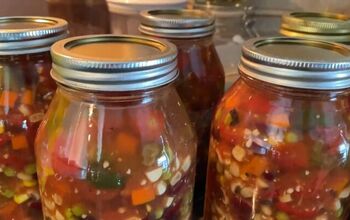
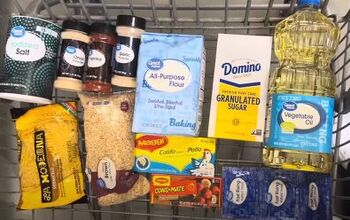













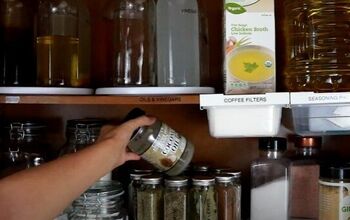
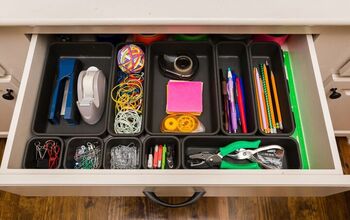

Comments
Join the conversation